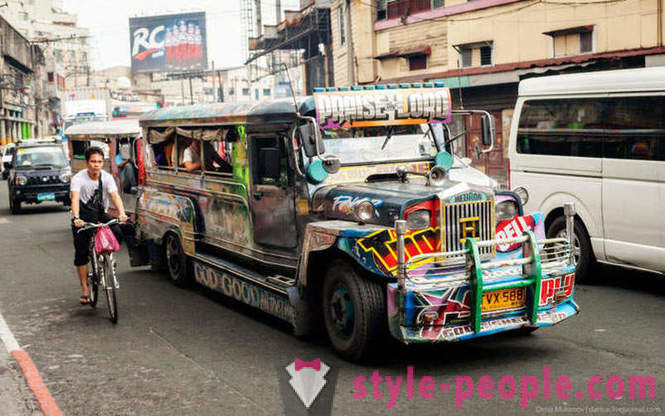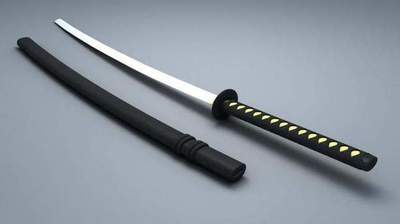Bright Filipino jeepney
• Bright Filipino jeepney
After World War II Filipino Americans went to the military jeeps. Local so pleased with these machines, they started making similar cars themselves in the handicraft workshops. The Philippines road travel thousands of jeepney and among them there are no two identical. Mainly they are used as public transport.
Dzhipni have become a real symbol of the Philippines, their images are found even on souvenirs.
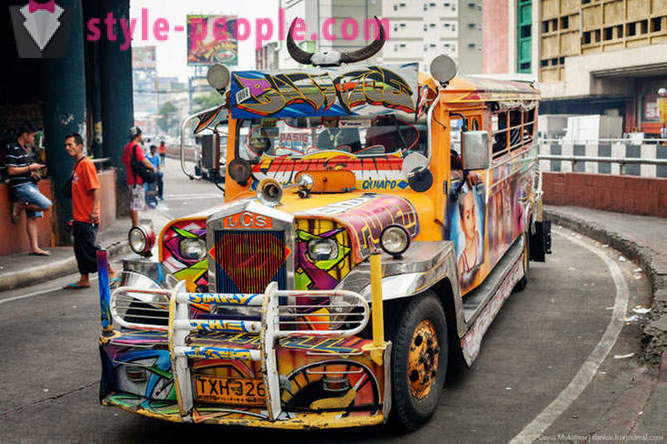
In Manila annually arrange Carnival "King jeepney". During this festival the residents choose the most striking and original jeepney.
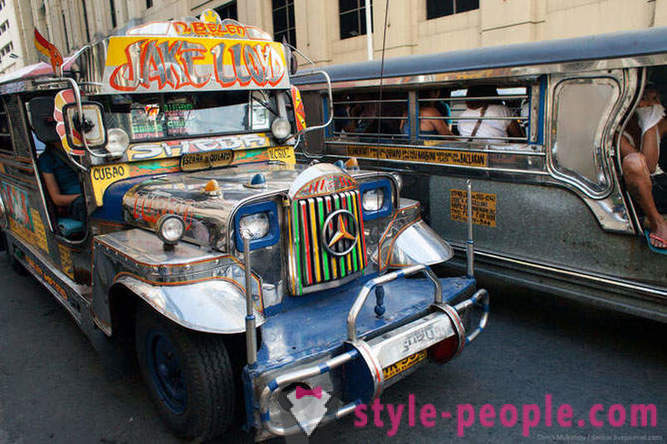
In an old jeepney engines from the Japanese cars and trucks. The motors are always dead, pulled with great difficulty, and judging by the blue smelly exhaust, oil, they do not eat much less than fuel.
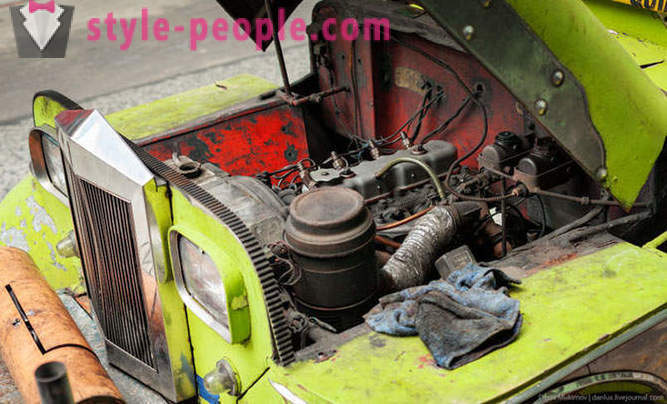
All dzhipni rear wing has a characteristic shape.
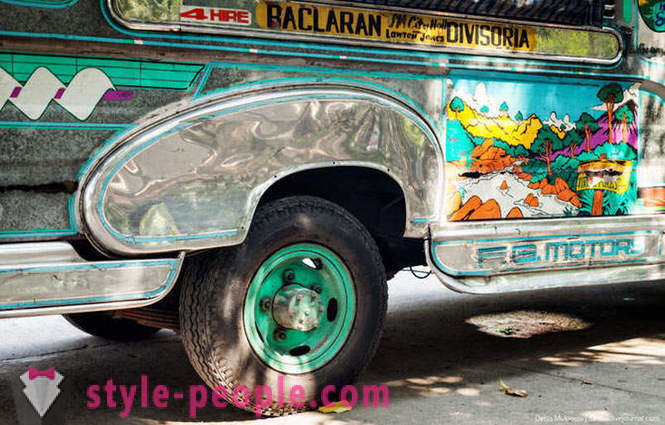
The boards are always plastered or painted pictures with American motifs.
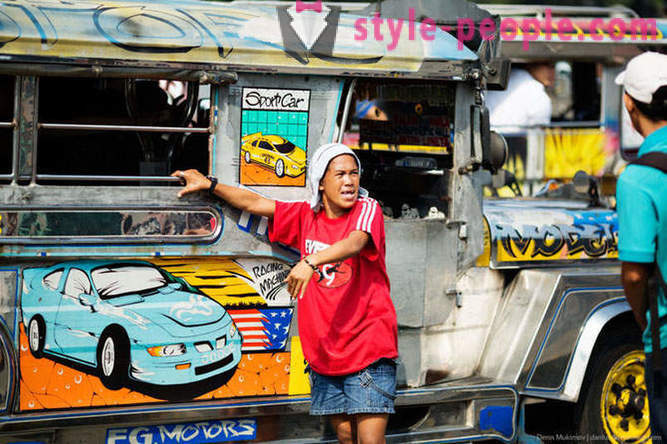
in the side windows dzhipni not only the windscreen. Exceptions are cars that are operated in the north of the Philippines, where the climate is cool and moist.
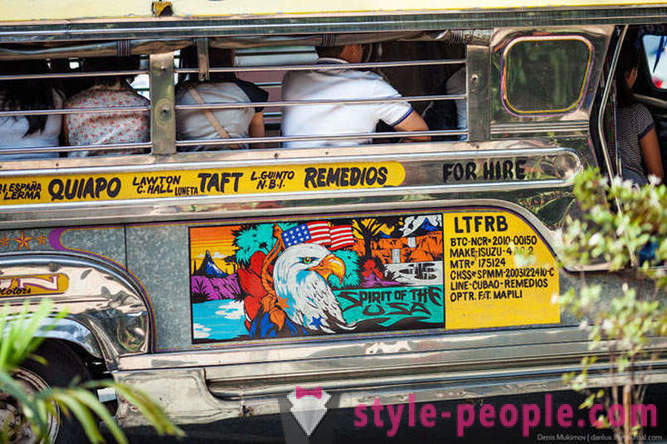
The spare wheel is always hanging out the side of the driver. Note the protectors.
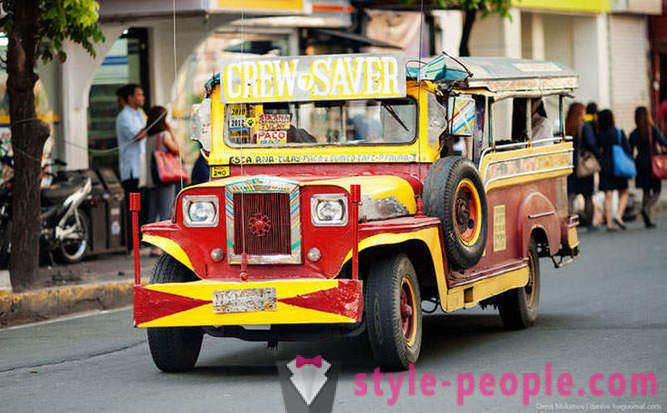
Embarkation and disembarkation of passengers through the rear opening, and it is done often on the go or while stopped at a traffic light. The driver stops whenever it is asked - is not regulated stops in Manila. Sometimes, because of the noise and din on the way, the driver can not hear the voice of the passenger, so local coins knock on the iron railing in jeepney - this is a stop signal to the driver.
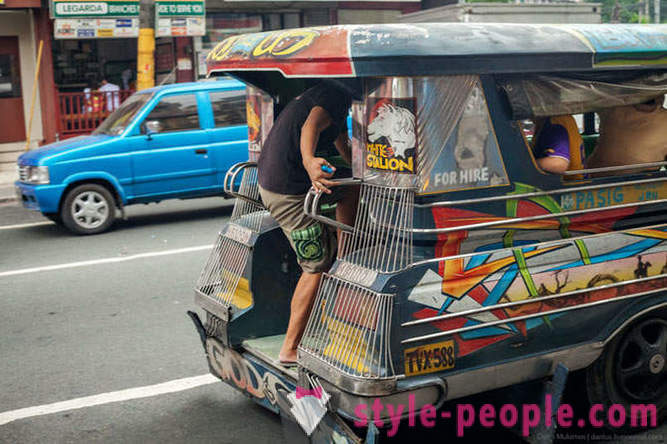
The seats in the cabin - it is simply two parallel benches along the sides. To pass through the cabin have to strongly bent down. All dzhipni between the benches at the beginning of the salon should urn.
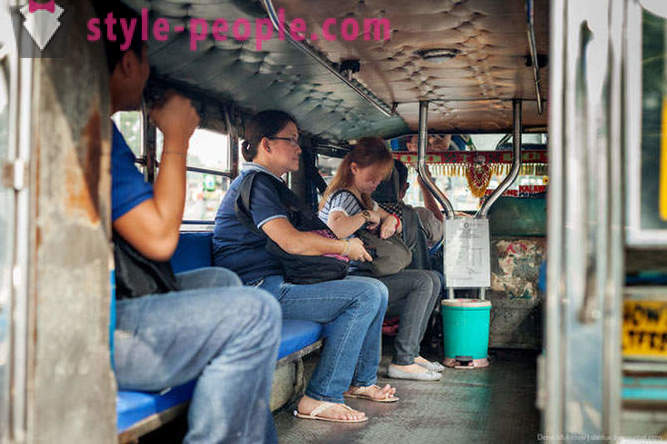
As this is not enough boxes in our buses!
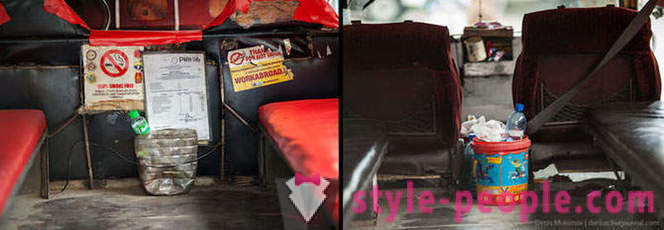
interior capacity - 15 - 25 people. Passengers always shift together more tightly to the passengers boarded included, helping to carry bags down the aisle. The level of comfort dzhipni roughly equivalent to our "Gazelle". Here, just as passengers pass vperedisidyaschim fares. Travel costs mere pennies, the price depends on the distance of travel.
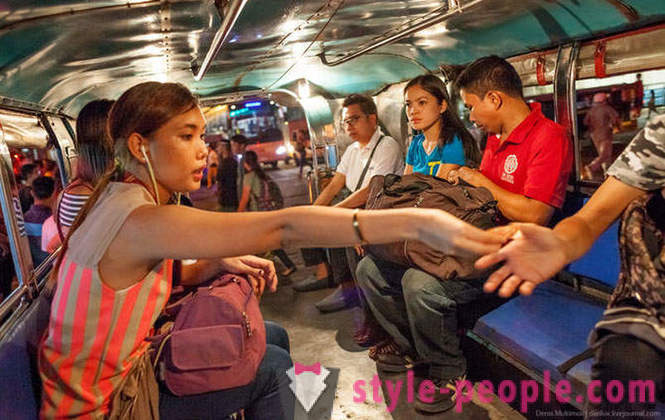
The drivers just as deftly counts surrender without being distracted from driving. jeepney drivers are not rare among his aggressive driving style and crazy. But if he will not go all the Philippines - fast, brazen and sharp, his car never will reach nowhere.
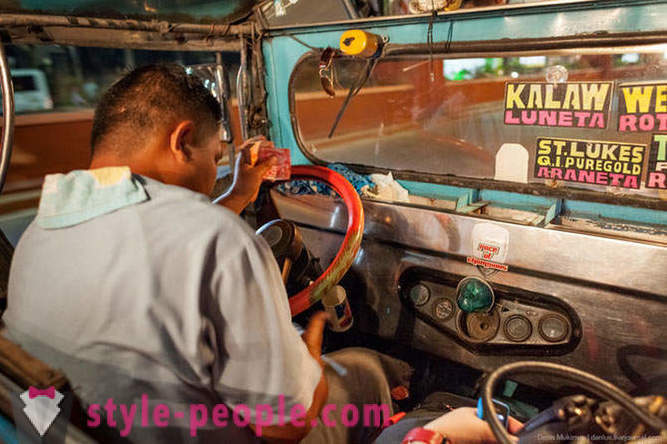
A typical dashboard. None of jeepney I did not see the speedometer. Notice how in this case made of a horn button.
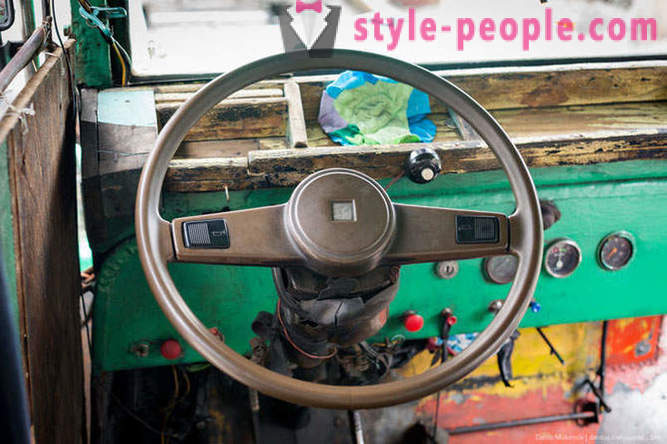
plates with the names of districts in which the jeepney rides, always hang on the windshield using the suction cups. After turning on the finite plate is inverted on the other side.
Salon mirror length is usually full cockpit width. Under the mirror often hangs knitted panels with the words "God save us."
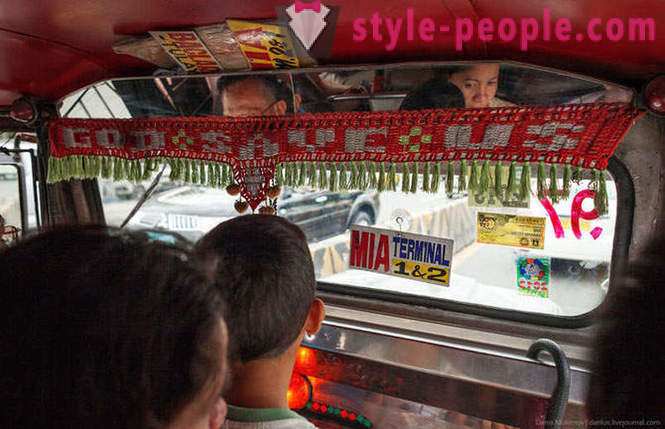
When the inner end position, it is not forbidden to take passengers outside the car bandwagon. In rural areas, in addition, you can climb to the roof.
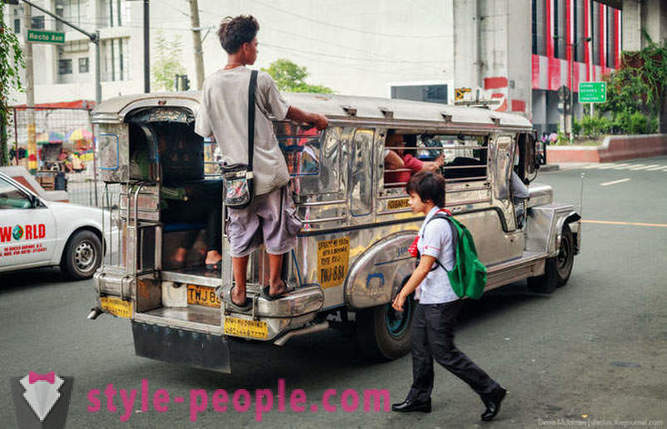
Next to the driver, two passenger seats if the edge of the man sits, he always winds foot outside.
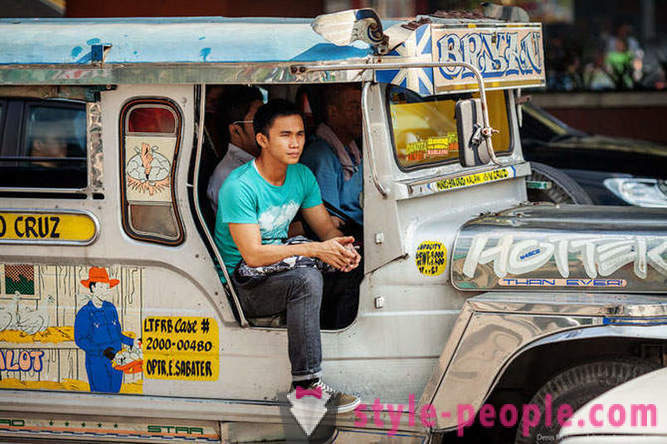
Most dzhipni do not have doors, but during parking, cars are closed by means of special gates.
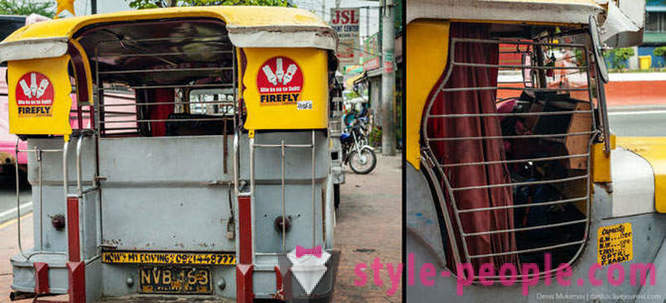
At the beginning of the working day remove the gate from its hinges and chained chained to any fence next to the sidewalk.
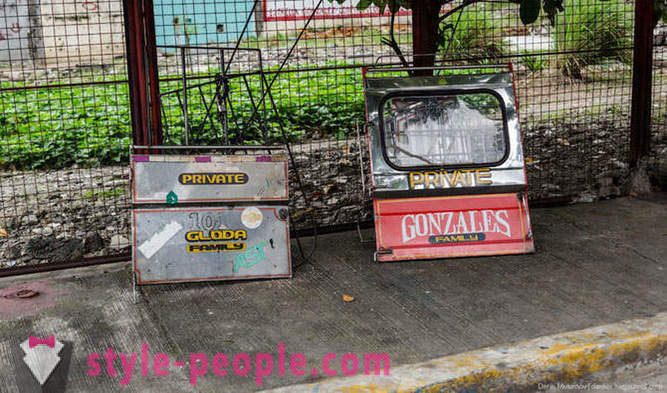
Decorate dzhipni as someone in that much. Two completely identical jeepney found impossible. Each machine - a work of art!
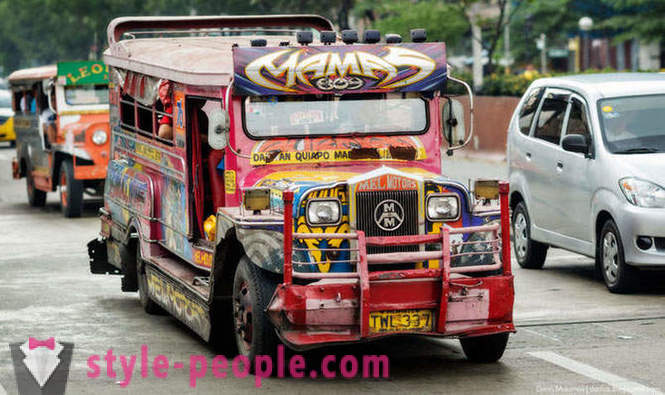
The icons in front to do with the car have not. You can find jeepney, Isuzu, Mitsubishi ...
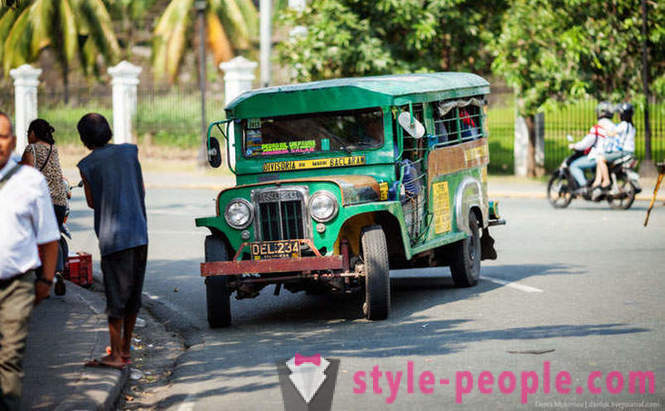
But most of all in the Philippines jeepney-Mercedes.
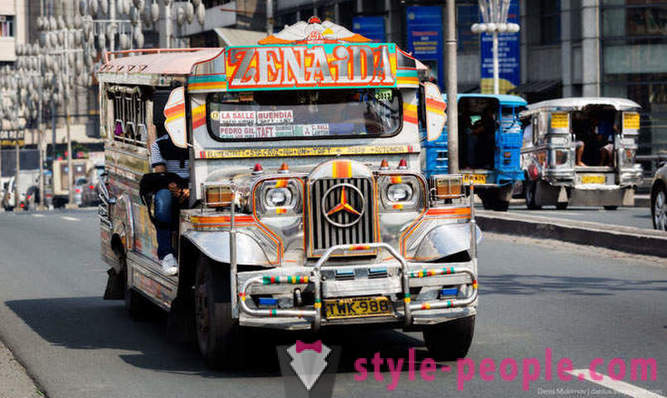
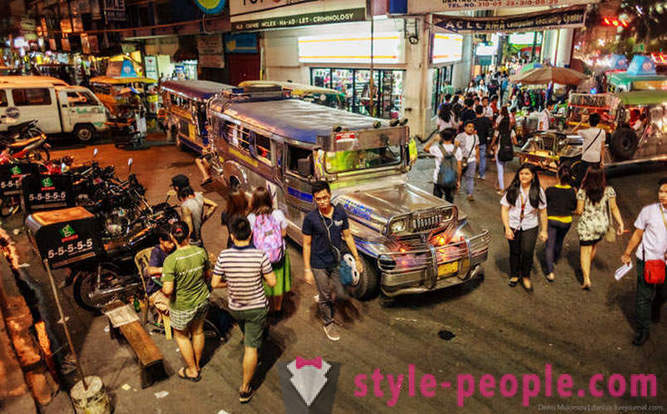
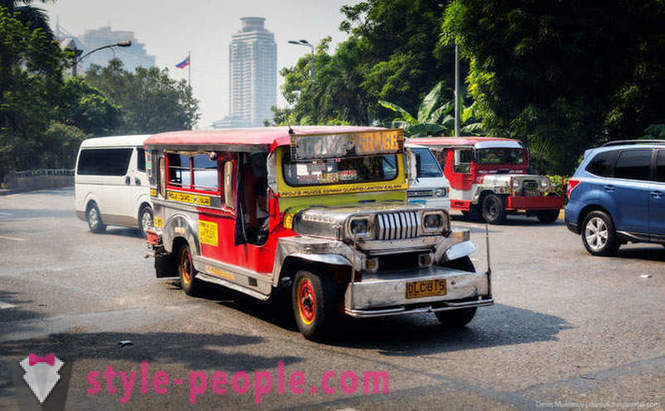
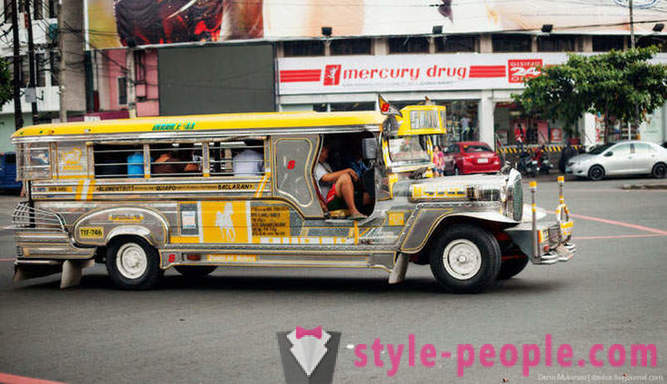
Protectors!
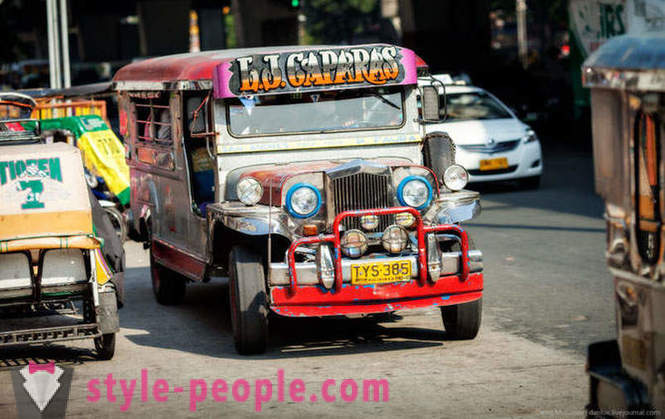
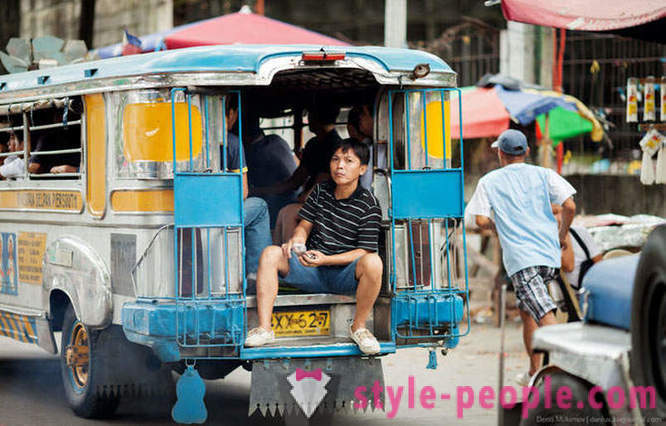
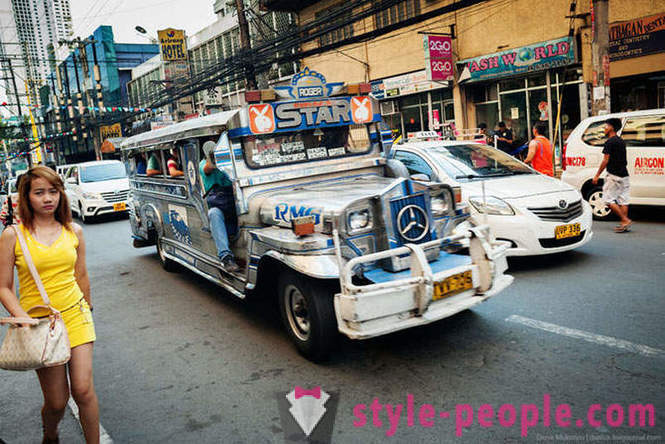
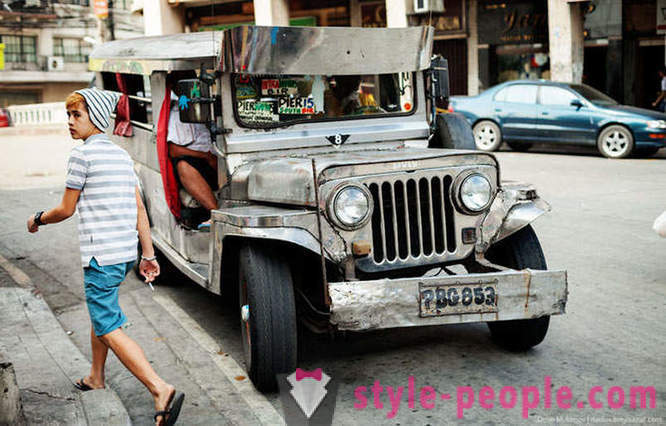
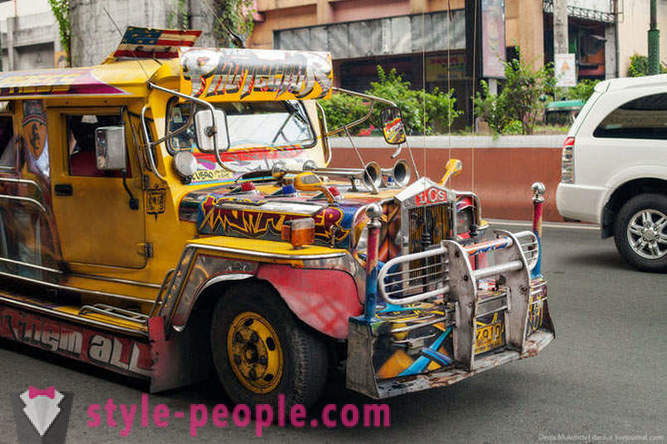
Variety jeepney, which is only found in one area of Manila.
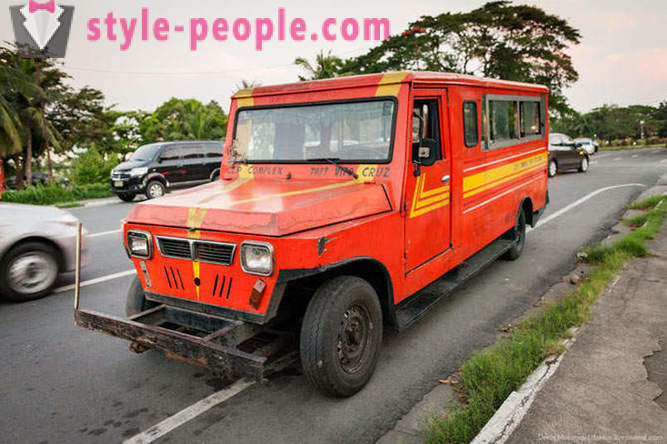
In addition to the routes, in the workshops made dzhipni modifications for private use.
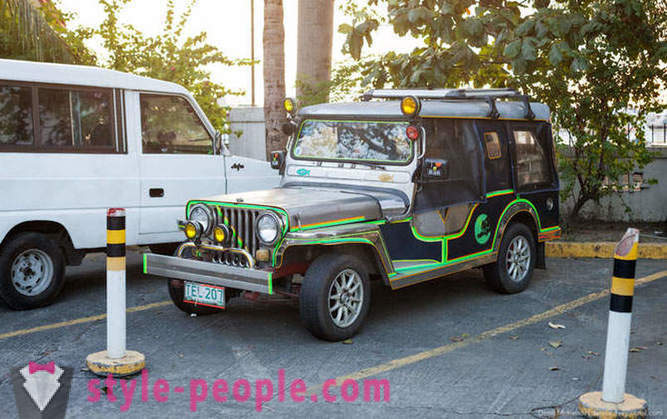
In the Philippine automotive industry has a distinct advantage over the world's leading automakers - the body is entirely made of stainless steel - is very important in a humid climate.
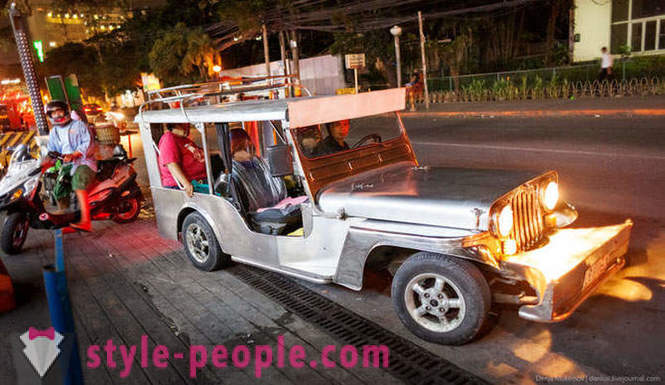
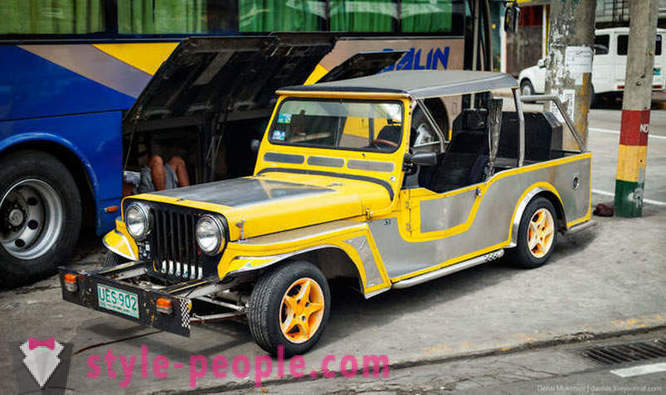
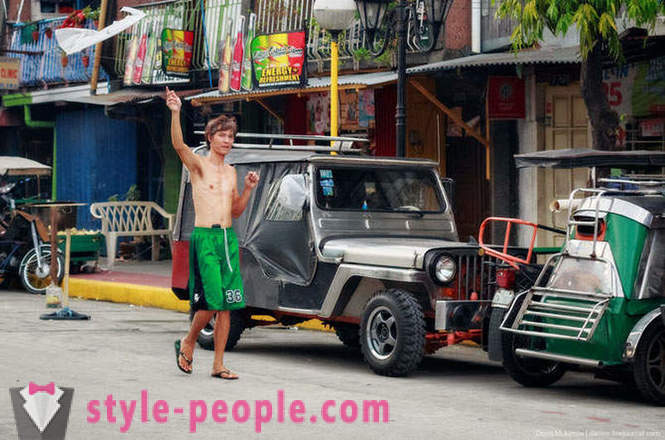
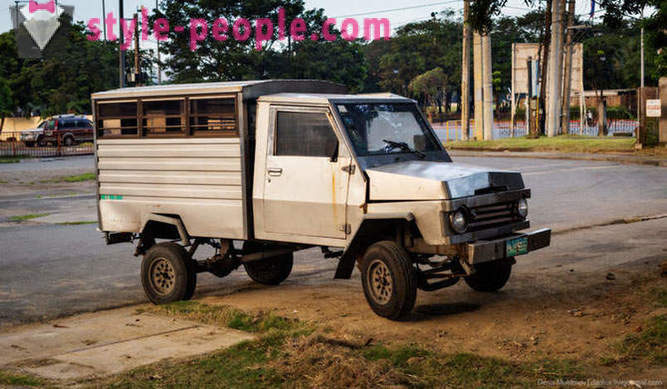
Here is a Philippine auto industry!
